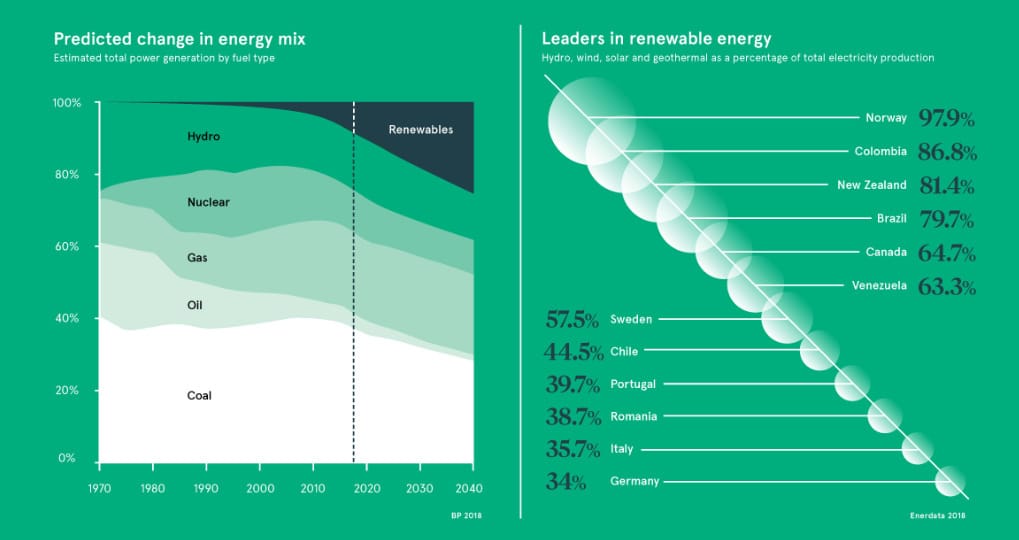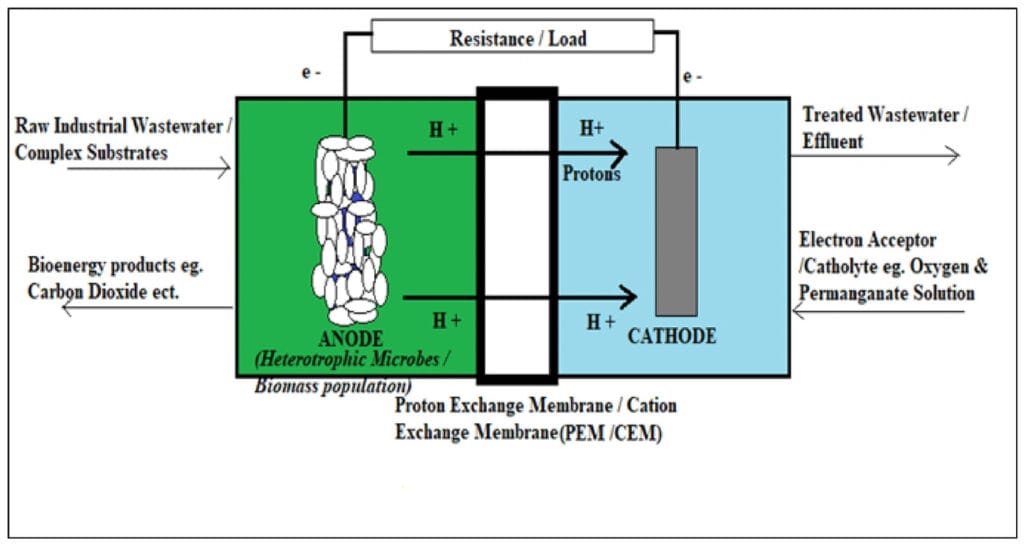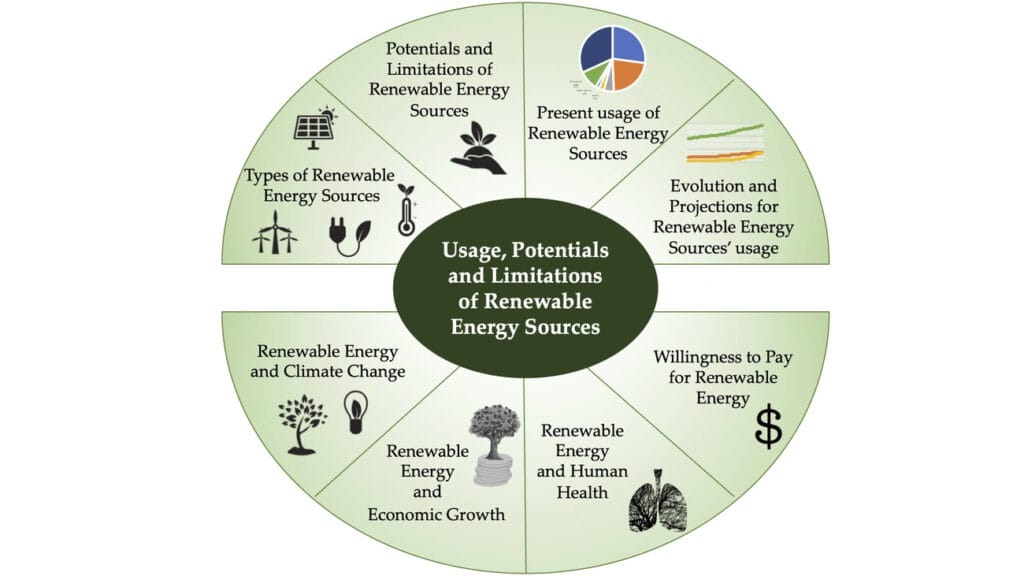How will 2040 shape up when China has an increased energy use from 0.57 billion tonnes of coal equivalent in 1978 to 4.49 billion tonnes in 2017? This massive increase points to our world’s energy challenge, where 78% of greenhouse gas rises stem from fossil fuel burning in industry.
Our current path is concerning, but 2040 might look quite different. The IPCC warns that without major emission reductions, we could exceed 1.5°C of global warming by 2030. However, 2040 projections show biotechnology as a powerful solution transforming our interaction with the environment. What will the world be like in 2040? We’ll witness significant growth in the bioeconomy—valued at $1 trillion in the US alone. The appearance of Earth in 2040 hinges on how we integrate these biotech advances with our energy systems.
This article explores the potential landscape of 2040, focusing on energy transformations and their integration with biotechnology. We’ll examine topics such as bioengineered enzymes for biofuel production and applications of synthetic biology in energy systems for carbon capture. We’ll consider how the convergence of these technologies might reshape our world and contribute to achieving the ambitious targets for reducing carbon emissions set for 2050.
Energy Systems Changing: 2024 to 2040

Image Source: Visual Capitalist
“Energy technologies interact and thus must be developed and deployed together.” — International Energy Agency Autonomous intergovernmental organization providing policy recommendations on energy
The global energy landscape is currently at a pivotal point. To meet climate goals, our current energy systems require significant transformation. While fossil fuels continue to dominate, sustainable energy biotechnology is gaining ground. The journey to 2040 will revolutionise energy production, distribution, and consumption across all economic sectors.
Global fossil fuel dependency trends
Despite growing concerns about the climate, fossil fuels continue to dominate global energy consumption, accounting for 78% of the current energy mix. This dependence is projected to decrease over the next two decades. Various forecasts suggest that fossil fuels will constitute between 40% and 60% of worldwide energy requirements by 2050. Developed nations are expected to experience the most substantial reductions in fossil fuel usage.
A closer look reveals that the 2020s might signal a plateau rather than a rapid decline in fossil fuel consumption. The McKinsey report suggests that investment in fossil fuel infrastructure will continue for at least another decade to meet increasing energy demands in developing regions. Meanwhile, the latest data from 2024 indicates this could be the year when emissions reach their peak, after which global emissions might begin to decrease for the first time since the Industrial Revolution.
Renewable energy production targets for 2040
Numerous nations and regions have established ambitious targets for clean energy adoption by 2040. Japan aims to have clean sources generate 40–50% of its power by 2040, a significant increase from 22.9% in 2023. New York State has also set a goal to get 70% of its energy from renewables by 2030, paving the way for emissions-free electricity by 2040.
During COP28, world leaders reached an agreement to triple renewable energy capacity, aiming for 11,000 gigawatts by 2030. To achieve this goal, we need unprecedented growth in several technologies:
- Starting in 2022, new capacity needs to average about 800 GW each year
- For context, wind power worldwide reached 832 GW in 2022, while solar reached 892 GW
- three ambitious climate plans achieve this 2030 target
Furthermore, the IEA’s Net Zero roadmap shows global electricity production becoming carbon-free by 2040, with advanced economies reaching this goal by 2035.
Carbon intensity metrics and goals to reduce emissions
Carbon intensity—the amount of CO₂ we emit for each unit of economic output or energy we produce—is crucial to monitoring our progress in reducing emissions. After remaining steady for 40 years, global carbon intensity must decrease to meet climate goals.
The European Union plans to cut net greenhouse gas emissions by 90% by 2040, compared to 1990 levels. This target backs its binding goal to reach climate neutrality by 2050.
Intensity-based metrics give helpful insights to cut carbon for fast-growing economies. While the ultimate aim remains to lower absolute emissions, carbon intensity helps evaluate whether entities are breaking the link between economic growth and emissions.
To give some context, from 2010 to 2021, the global carbon intensity of primary energy fell by a compound annual average rate of 0.4%. To meet bold climate targets, this drop needs to speed up to between 6-12% each year—a pace never before seen at national levels.
Biotech Breakthroughs: Causing a Revolution in Energy
Fresh approaches in biotechnology are impacting energy production, providing solutions to long-standing challenges in sustainability. As we envision 2040, these innovations will play a crucial role in moving away from fossil fuel dependence.
Engineered enzymes to produce biofuels
Genetic engineering plays a role in creating sustainable, workable, and affordable biodiesel from plants, yeast, algae, and farm waste. Studies indicate engineered Yarrowia lipolytica can accumulate 70–90% lipids from biomass using glucose alone. This advance enables us to produce higher quantities of high-energy biofuels through enzyme-based energy conversion. Biocatalysis in energy applications grows in importance for developing sustainable fuel sources.
Scientists apply these techniques to increase lipid accumulation:
- Enhanced carbon uptake and reduced fatty acid outflow
- Increased acetyl-CoA and improved lipid-producing enzymes
- Upregulating genes and modifying transcription factors
Scientists have shown that changing the genetic makeup of the yeast Lipolytica can lead to the production of more fatty acids from different industrial waste and sugars from natural sources. These methods might reduce production costs by 2040 through clever resource management, water recycling, and the adoption of biorefinery techniques to convert biomass into energy.
CRISPR applications in algae-based energy
CRISPR technology has revolutionised microalgae engineering to produce biofuel. Microalgae can fix CO₂ at efficiencies of 8%–10%, which far exceeds land plants. Each kilogramme of produced microalgal biomass captures and fixes approximately 1.83 kg of CO₂. The process creates two benefits in 2040 scenarios: to generate energy and to store carbon.
Certain microalgae species contain high fat levels. Nannochloris spp. can hold up to 56% fat, Chlorella spp. can hit 53%, and Neochloris oleoabundans leads with 65%. These neutral fats, or triacylglycerols with C16 and C18 structures, serve well to produce biofuel.
CRISPR/Cas9 genome editing has sparked a change in microalgae engineering. In 2016, researchers applied CRISPR to Phaeodactylum tricornutum, achieving a knockout success rate of 31%. Later advances allowed scientists to produce non-transgenic mutants in less than three weeks. This progress will shape the landscape of algae-based biofuel production by 2040. Photobioreactors will be crucial in unlocking the potential of these engineered microalgae.
Synthetic biology to capture carbon
As we look toward 2040, synthetic biology opens up fresh avenues to capture carbon. Scientists at the Max Planck Institute have developed the THETA cycle, an artificial pathway that has a greater impact on CO₂ capture than natural processes. This 17-step method uses the two fastest known CO₂-fixing enzymes to produce acetyl-CoA, a key ingredient for biofuels and other materials.
After creating the THETA cycle in test tubes, scientists tweaked it to boost yield 100 times before introducing it into living E. coli bacteria. The cycle fixes 1.5–5 times more CO₂ while requiring 20% less energy than the Calvin-Benson-Bassham cycle, which drives photosynthesis across the globe.
Adding to these breakthroughs, CRISPR gene editing influences metabolic engineering in carbon-capturing organisms, boosting their productivity. By 2040, our planet’s look might hinge on our ability to scale up these technologies to factory levels to capture and fix carbon. Experts predict that carbon capture and storage technologies will play a key role in fighting climate change.
In 2040, the combination of these biotech advancements presents a transformative opportunity for our energy systems. Mixing bioengineered enzymes, CRISPR-modified algae, and synthetic biology methods to grab carbon could transform how we tackle both energy production and greenhouse gas management.
Sectoral Convergence: Where Energy Meets Biotech

Image Source: MDPI
Biotechnology and energy systems are joining forces to build a sustainable future. This combination could start new industries and lead to tech breakthroughs by 2040. These advances might look like science fiction now, but they’re coming soon.
Biomanufacturing of energy storage materials
Scientists are developing fresh approaches to produce energy storage materials from biological sources. Researchers at the University of Colorado Boulder have invented a groundbreaking method that uses microbes grown in brewery wastewater to create carbon-based materials for energy storage cells. This discovery points to the potential for circular economy concepts to become standard practice by 2040.
Chitin, chitosan, and other biopolymers have a giant impact on energy storage technologies. These biomaterials offer key advantages over traditional options due to their compatibility with living tissue, biodegradability, and minimal environmental impact. Recent advancements have improved their electrical conductivity, structural integrity, and scalability—essential characteristics to use them in sustainable energy biotechnology.
Microbial fuel cells and bioelectricity
Microbial fuel cells (MFCs) influence wastewater treatment and electricity generation. These systems clean up to 50% of chemical oxygen demand while producing power densities between 420 and 420–460 mW/m². MFCs function by harnessing bacterial metabolism to release electrons, which generate electrical current.
Recently, nanotechnology has transformed MFC performance. Changes to electrodes using iron oxide and manganese oxide mixed with polypyrrole show great promise. The anode and cathode materials play key roles in these systems’ effectiveness. Also, MFC applications have expanded beyond electricity production to include
- Cleaning up wastewater and generating power
- Recovering valuable metals from waste streams
- Producing biofuels and other essential chemicals while creating electricity
These microbial fuel cell uses show how bioelectrochemical systems can generate sustainable electricity. To transfer electrons in MFCs, it’s essential to grow biofilm on the anode surface.
Using biotech to make hydrogen
Hydrogen plays a key role in fertiliser production and chemical processing, and it has enormous potential to store energy. The majority of hydrogen is produced using natural gas, but biotechnological processes are becoming more and more popular as environmentally friendly ways to produce biohydrogen.
Recent lab discoveries in modifying hydrogenase and examining bacteria that use light now indicate promising possibilities for success. The BIO-H2 project demonstrates this trend by using organic material from wastewater to produce hydrogen. This system creates a complete cycle with minimal energy production costs when you consider the reduced expenses for wastewater treatment.
How might 2040 look when these technologies reach their peak? We could observe urban centres powered by bioelectricity generated from waste, factories employing bioengineered systems to create hydrogen, and energy storage units constructed from brewery byproducts. These scenarios suggest that forecasts for 2040 should take into account not just individual technologies but also how they interact across various industries.
Regional and Industrial Impacts by 2040

Image Source: MDPI
“By 2040, new bio-based materials alone could become a $300 billion market, according to a recent McKinsey report.” — Science, Peer-reviewed academic journal published by the American Association for the Advancement of Science
Biotechnology and energy systems will combine to transform regional industries by 2040. This union will create new opportunities for sustainable growth across various sectors.
Energy-biotech integration in agriculture
The agricultural landscape of 2040 will likely feature bioengineered crops designed for both enhanced productivity and carbon sequestration. The improvement of crop plants could potentially reduce synthetic nitrogen fertiliser waste by up to half, which would lead to a reduction in greenhouse gas emissions by 0.5% and CO₂ emissions by 0.7%. These efficiencies translate to global savings of approximately $100 billion annually.
Engineered crops have the potential to produce industrial chemicals and biofuels at industrial levels. Bioengineered sugarcane has the potential to produce 6,700 litres of biodiesel per hectare, which is much higher than the 500 litres per hectare that conventional soybean production can produce.
Urban energy systems powered by bioengineered solutions
Cities play a central role in changing how we use energy. They now use up 78% of the world’s energy while producing over 60% of greenhouse gas emissions—even though they take up less than 2% of the Earth’s surface. As 2.5 billion more people move to cities by 2050, bioengineered solutions will become essential.
New approaches to optimise multiple goals have started to appear for urban smart energy systems, and we now see more use of bioengineered bacteria in waste management. Microbial fuel cells that change waste into electricity offer two advantages: they clean wastewater and create power at the same time. By combining artificial intelligence with biological systems, we can achieve huge gains in efficiency through data-based optimisation.
Industrial decarbonization through biotech pathways
Biotech in industry opens up game-changing ways to cut carbon across many fields. If cutting-edge biotech reaches its peak by 2040, it will create a big shift in the economy and environment:
- It could generate up to $1 trillion in economic value
- It might reduce CO₂-equivalent emissions by 3-4 gigatons (about 5% of global emissions in 2022)
- It could free up 2-4 million square kilometers of land—as big as India
- It might save 250-500 billion cubic meters of water
These changes will have an impact on five key sectors: agritech, biofuels, speciality chemicals, plastics, and textiles. The U.S. Department of Energy has begun to create cost-effective, industry-specific plans to implement in the cement, chemical, food and beverage, iron and steel, petroleum refining, and pulp and paper industries.
Metrics and Models to Track Progress
Tracking progress toward our 2040 energy goals requires precise metrics and forecasting models. These models should demonstrate complex links between technology, society, and the environment.
Carbon intensity of electricity (CIOE) as a benchmark
Carbon intensity measures the grams of CO₂ released per kilowatt-hour (kWh) of electricity produced. This crucial metric helps assess the cleanliness of energy systems. The world’s energy supply is still carbon-intensive and must be reduced by 47% by 2040 to meet climate targets. Global energy intensity improved by 1.7% in 2017, but it must accelerate to 3.4% to align with the most optimistic 2040 scenarios.
Clean energy sources don’t give off emissions, unlike fossil fuels. This contrast significantly affects the real world—research shows that if a million people ran washing machines when electricity is cleaner, it could reduce CO₂ emissions by 76,650 tonnes.
Production-based vs consumption-based CO₂ emissions
Two main approaches track emissions across borders: production-based accounting (PBA) measures emissions created within a country, while consumption-based accounting (CBA) assigns pollutants to end users regardless of where the production occurs.
6.2 gigatonnes of CO₂—23% of all fossil-fuel emissions—exist in goods used in countries different from where companies made them. China sends out 1.4 Gt of CO₂ linked to use elsewhere. Yet for most countries, gaps between PBA and CBA remain small.
Many people hold the belief that rich countries transfer carbon to poor ones, but the facts provide no real evidence to substantiate this claim. Instead, countries that use energy well and import a lot tend to have higher CBA-to-PBA ratios.
STIRPAT model helps to predict energy-biotech trends
The STIRPAT model (Stochastic Impacts by Regression on Population, Affluence, and Technology) builds on the classic IPAT equation to make more accurate predictions about emissions. This model measures the relationship between environmental impact (I), population (P), affluence (A), and technology (T).
When paired with machine learning techniques like Adaboost algorithms, STIRPAT has a significant influence on forecast accuracy. In energy-biotech scenarios, these models indicate that low-carbon paths reach their peak first, followed by medium-carbon scenarios, while high-carbon scenarios don’t peak until after 2050. This knowledge offers vital clues about what we can expect in 2040.
Conclusion
The Path Forward: Biotech-Energy Integration to Create a Sustainable 2040
How Earth looks in 2040 depends on what we decide today at the intersection of biotechnology and energy systems. This article has examined how the integration of biotechnology and energy systems provides us with new opportunities to tackle climate problems that previously seemed too complex to resolve.
The next ten years look set to bring significant changes. Engineered enzymes are boosting biofuel output. Microalgae tweaked with CRISPR soak up more carbon. New synthetic biology paths like the THETA cycle show a lot of potential. The strongest evidence suggests these tools could help us lower carbon intensity by 6–12% annually. We need to hit these numbers to meet climate targets. We’ve never seen drops this large before, but they’re becoming more crucial.
Furthermore, mixing different sectors offers real ways to turn ideas into action. Microbial fuel cells, which clean dirty water while simultaneously generating power, exemplify this blend. Methods to turn leftover brewery stuff into materials for storing energy highlight ideas about reusing resources that will be normal by 2040.
We can’t ignore how these technologies impact regions. Bioengineered crops in farming could slash emissions while saving $100 billion. Cities cover less than 2% of Earth’s surface but consume 78% of global energy. They have a lot to gain from biotech solutions.
To achieve these outcomes, we need precise measurements and tools to predict. Carbon in the electricity must improve faster – from 1.7% now to 3.4%. To improve global monitoring, we must improve our carbon counting methods at both the source and the point of use.
Our current path is concerning, but this study reveals a promising alternative. The bioindustries—valued at $1 trillion in the US alone—have significant growth potential and could address climate challenges. Emerging biotechnologies might reduce CO₂-equivalent emissions by 3–4 billion tonnes and generate up to $1 trillion in revenue.
The connection between energy systems and biotech advances paves the way to a sustainable future. We need to ask ourselves not what 2040 will look like but how we can shape it by combining these transformative technologies.
FAQs
Q1. How will energy systems change by 2040?
By 2040, we’ll see a major shift from fossil fuels to renewable energy sources. Experts think global renewable energy capacity will grow three times larger, with many countries aiming to get 40–70% of their electricity from renewable sources. The most advanced economies might reach zero-emission electricity generation between 2035 and 2040.
Q2. How will biotechnology shape future energy production?
Biotechnology will influence energy production by 2040. Engineered enzymes enhance biofuel production. CRISPR-modified microalgae might capture more carbon. New biology approaches, like the THETA cycle, are causing a revolution in energy creation and greenhouse gas management. We expect biotechnology in renewable energy to be essential to reach sustainability goals.
Q3. How will urban energy systems change as biotech becomes part of them?
City energy systems in 2040 will rely heavily on bioengineered answers. We might see microbial fuel cells widely used for cleaning wastewater and generating electricity. Bio-systems with AI added could boost waste handling and power production in cities, meeting the growing energy demands of city dwellers.
Q4. How could cutting-edge biotech affect the economy by 2040?
Cutting-edge biotech, if it reaches its full potential by 2040, could have an impact on the economy worth up to $1 trillion. This includes a possible yearly savings of $100 billion in farming by cutting fertiliser waste. Furthermore, it could reduce 3–4 gigatons of CO₂-equivalent emissions, which constitute about 5% of global emissions.
Q5. What is the methodology for measuring progress towards the 2040 energy goals?
Experts will monitor progress using key indicators such as the carbon intensity of electricity (CIOE). This measures the amount of CO₂ power plants emit for each kilowatt-hour they produce. Both methods of calculating CO₂ emissions, which include production and consumption, will play an essential role. Clever prediction tools like STIRPAT, enhanced by AI, will help forecast emission scenarios and influence policy decisions.

